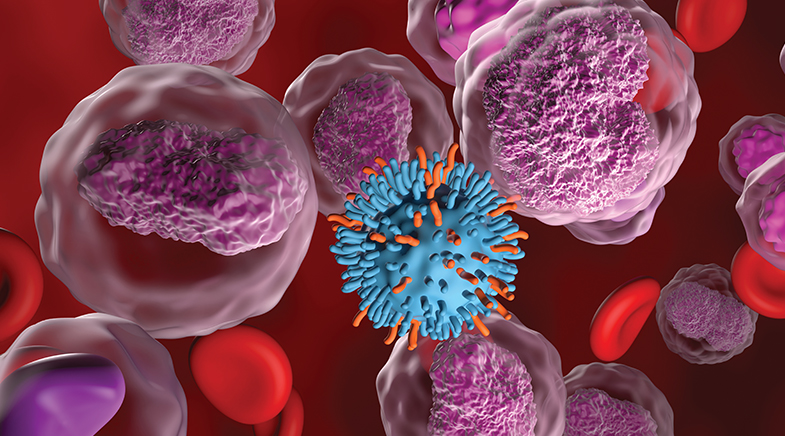Destination Moon
-
- from Shaastra :: vol 02 issue 05 :: Sep - Oct 2023

Much can be learnt about the Earth by understanding how the Moon formed and how it has changed over time.
Indians rejoiced at the perfect launch of Chandrayaan-3 in mid-July and the equally perfect touch-down of the Vikram lander near the south pole of the Moon in late August, after a 40-day journey that harnessed a slingshot mechanism using Earth's gravity.
Chandrayaan-3 had four instruments on the Vikram lander and two on the Pragyan rover; both the lander and the rover were put to sleep after 14 days. The Indian missions do not have the technology to keep the instruments warm enough to last the lunar night, when the temperature plummets below –100°C.
This mission is the latest in a series of lunar explorations. Up until the 1970s, the Apollo missions, led by the United States, carried humans to the Moon, landed rovers, and scooped up soil samples to bring back to Earth. The Luna missions of the erstwhile Soviet Union did not carry humans, but they, too, landed modules and carried back samples. The intention was to determine the composition of Moon rocks, and to test for signs of life and of water on Earth's only satellite.
After a long hiatus, there has in recent times been renewed interest in the Moon. China's Chang'e missions started in 2007, just before India's Chandrayaan-1, by sending a spacecraft to orbit the Moon. NASA's Lunar Reconnaissance Orbiter, launched in 2009, is still in operation. Chang'e-3 landed on the Moon in 2013, and Chang'e-4 in 2019; both landers are still working.
A major goal of these missions is to develop technologies for future human exploration of the Moon.
In 2019, India's Chandrayaan-2 entered the lunar orbit, but the lander failed. China's Chang'e-5 landed in 2020. Meanwhile, private industry has teamed up with the Artemis mission led by the U.S. to build a base on the Moon.
Just before Chandrayaan-3's landing, a Russian attempt to reach the Moon after almost 50 years failed. In September, the Japan Aerospace Exploration Agency (JAXA) launched a mission to land its Smart Lander for Investigating Moon (SLIM). The 590-kg lander, with three science payloads, will reach the Moon in about six months.
MISSION GOALS
A major goal of these missions is to develop technologies for future human exploration of the Moon. This includes developing new ways to land on different parts of the Moon, and to transport cargo and astronauts to live and work on the lunar surface. It is therefore necessary to look for water sources, and to understand the nature of the gases and charged particles close to the Moon surface.
It is thought that since the Moon and the Earth were formed at the same time 4.5 billion years ago, much can be learnt about the Earth by understanding how the Moon formed and how it has changed over time. The Moon has a profound influence on Earth, affecting its tides, climate, and even its evolution. It has been bombarded by meteorites for billions of years; some believe that these impacts could have brought water and organic molecules to the Moon, which could have supported life.
The Chandrayaan-3 mission was designed to address several outstanding questions in lunar science, including the presence of water ice near the Moon's south pole. A Chandrayaan-2 experiment showed the presence of water in this region but could not pinpoint its location. The terrain is ragged with high peaks and craters, and water is expected to exist in the form of ice, in the permanently shadowed regions of the south pole. The mission had payloads to study the Moon's geology and composition, which will help scientists to better understand its origin and evolution. Also, one of the aims was to examine the composition of the thin atmosphere of the Moon, which is bombarded by particles from the solar wind, leading to the presence of charged particles. Japan's SLIM also has payloads for studies of the atmosphere and environment—in the Moon's equatorial region.
SMALL IS BEAUTIFUL
The recent surge in the number of Moon missions is because compact electronics, digital imaging and spectroscopic components, and powerful computing equipment can now be embedded in payloads light enough for our satellites to carry. These missions are also testing the limits of current engineering challenges.
Strikingly, the public, in particular students, are taking an active interest in these scientific and technological experiments. The hope is that they inspire a new generation of talented scientists and engineers – just as the Moon landings of five decades ago did for an earlier generation.
See also:
Have a
story idea?
Tell us.
Do you have a recent research paper or an idea for a science/technology-themed article that you'd like to tell us about?
GET IN TOUCH















